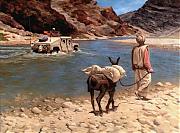There's an
interesting article by Eric P. Wendt based on counter-terrorism experience on Basilan describing operations against the Abu Sayyaf. One of the major keys to success, in the author's view is not the destruction of enemy output but it's infrastructure.
While it is important to target all four areas shown in Leites' and Wolf's model, it is helpful to liken internal and external support to a well that provides the overall supply of water. The water flows from the well through the spigot (the infrastructure), which translates it into output (guerrilla patrols, bombings, etc). The output can be equated to water coming out of a faucet. Attacking the output involves engaging trained, organized and equipped insurgents, or their planted bombs, in battle. Such attacks against insurgent output are resource-intensive and often carry a high price in blood.
While attacking the output is a necessary portion of COIN, it must be a supporting effort and not the main effort. Attacking output as the main effort in COIN is equivalent to trying to stop the flow of water by slapping at it as it comes out of the spigot. If we throw ever-increasing resources against the output, we will slap the water even faster, but we are doomed to failure. Attacking output as the main effort in COIN has failed throughout history, and it will fail during the GWOT.
The unconventional approach to COIN must address all areas of the Leites and Wolf model, but the main effort must be to attack the cadre or infrastructure. In conventional war, we can make direct attacks against troops in the field (output), but in COIN, we cannot directly attack the members of the infrastructure, because we cannot easily identify them.
Instead, we must first work indirectly, through, by and with the local internal supporters and population, using the correct carrots and sticks so that the population will identify and expose members of the local insurgent infrastructure for us. Once they have been identified by the local populace, the infrastructure members can be killed or captured. When we work indirectly through the local populace to identify members of the infrastructure, we are correctly stopping the insurgent flow of water by turning off the spigot. Targeting the members of the local infrastructure must be the main effort in COIN...
The whole article emphasizes the use of developing local structures to defeat the enemy. Politics and public diplomacy, to use the word du jour, is the main weapon in counterinsurgency. One striking omission in the paper is the lack of discussion of the role of the media in any campaign. The campaign in Basilan was conducted outside the glare of media scrutiny, a factor which other battlefields of the GWOT -- even Afghanistan -- share to degree because of press preoccupation with Iraq.
The interesting question is what effect a closely involved MSM will have on the task of working "indirectly, through, by and with the local internal supporters and population, using the correct carrots and sticks so that the population will identify and expose members of the local insurgent infrastructure for us". Two people with a possible opinion on the subject are Max Boot and Robert Kaplan. Boot's views on the efficacy of small footprint interventions are well known. At a
symposium at the Council of Foreign Relations Kaplan spoke to issue of media involvement directly...







Bookmarks